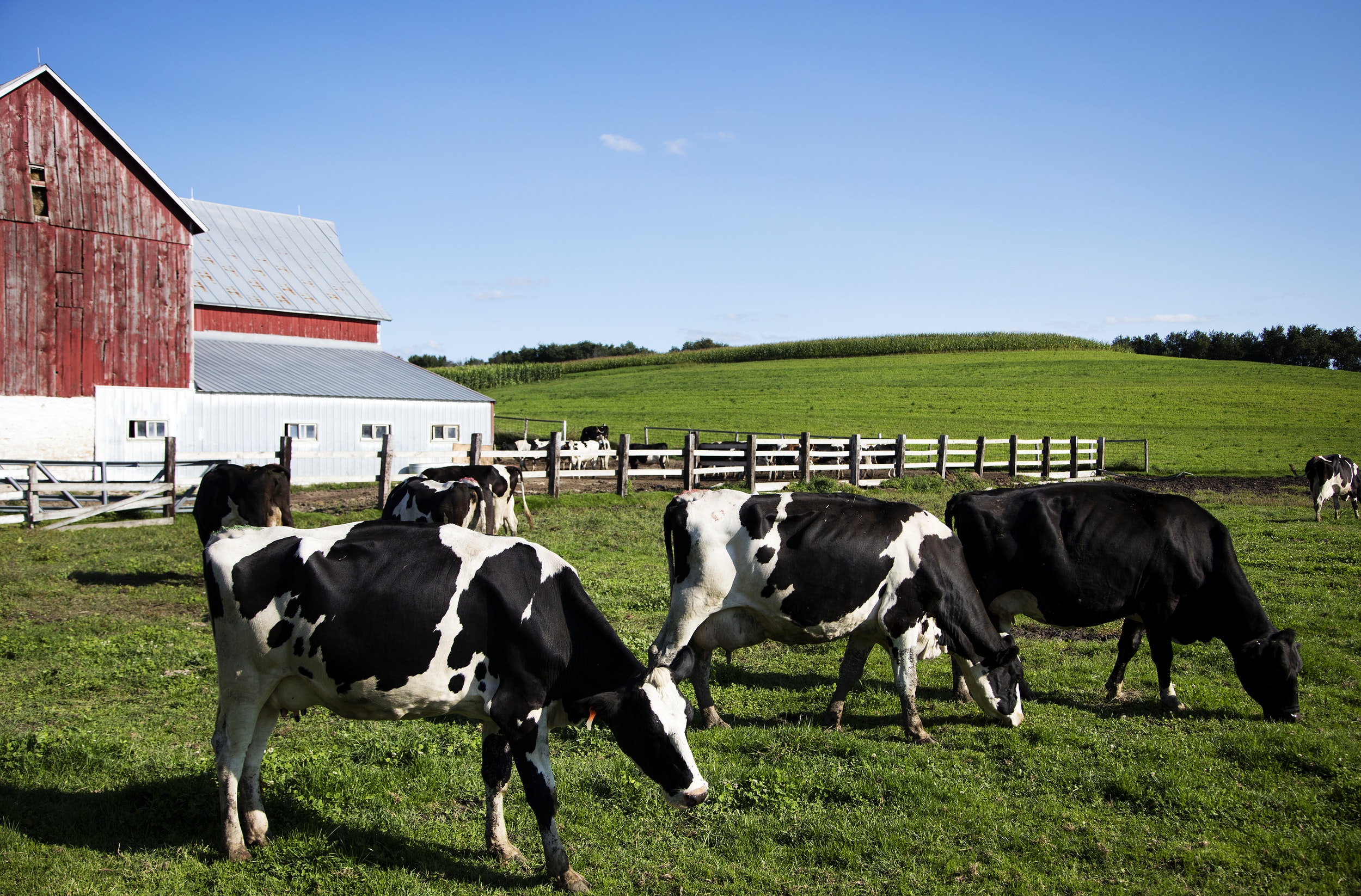Dairy Industry & The Environment
The long-term wealth of any nation depends on the productivity of its soil and how well it is nurtured and preserved over time.

Farmers are closest to the land and depend on it for their livelihood. They have long recognized the need to take good care of their land. Today, modern dairy farmers operate to enhance the productive capacity of their land and to improve the environment.
Two basic systems of dairy farming exist in the United States. One involves cows grazing on pasture where the manure is returned directly to soil. The second system involves cows being maintained in an area with feed, water, and shelter provided for them. In this latter case, special waste handling systems are developed and used to return the waste to the land as natural fertilizer in a way that protects our environment. Some of the animal waste is composted and turned into natural fertilizer for use on cropland. Some operations market the composted waste for use on gardens and lawns in urban areas, therefore reducing the need for chemical fertilizers.
Each day, large volumes of milk move from dairy farms to milk processing plants. Much of this milk is used in the production of dairy foods other than fluid milk products. For example, cheese-making produces cheese plus a “leftover” called whey. Many years ago this product was considered a waste product and was discarded in various ways, which were often harmful to our environment.
Today, whey is looked upon as a useful product and is used in its entirety. It contains significant amounts of quality nutrients such as protein and minerals. It is made into many food and non-food products that add economic value to its economic value.
For example, whey proteins are used in making candy, baby food and bakery goods. It is used to make lactic acid, an ingredient in cake mixes. It is an important ingredient in cosmetics. Lactose (milk sugar) is used extensively in the pharmaceutical industry. Derivatives of lactose may be used in making toothpaste and as a specific agent in hardening steel. Proteins found in cheese whey can be utilized to produce clear film packaging materials that are both edible and readily biodegradable. Whey and lactose are used to make specialty adhesives and paper coating. Recently, special “high clarity” casein (protein) has been used in the manufacturing of television screens.
Today, modern milk processing plants make use of all the milk received from farms, producing a host of food and non-food products that create economic value and at the same time protect the environment. Modern plants now remove water from milk in condensing and drying operations and use the water to clean plant facilities before recycling it to pasture and grass growing operations.
The United States dairy industry faces the future committed to making more and betterproducts for its consumers, while it continues to improve the environment and the land.

